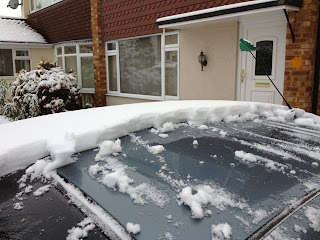In November of last year I wrote a blog about Pollination
and the important part bees play in it. I was concerned that I had only seen
one bee throughout the whole of 1012. I happened to take a photo of that
solitary bee collecting pollen from a flower in my garden.
A week ago when we had the snow, I saw a bee clutching the
rendering on a wall of my house. It was an incongruous sight; the creature was immobile
while trying to warm itself in the fleeting sunshine. I wondered if perchance
it could be that very same bee I had photographed before. I took another, but comparing
them, I think they are different.
If you are concerned about the extinction of bees, there’s
still time to sign a petition for banning neonicotinoid pesticides throughout the EU. The European food safety
watchdog recognizes that this pesticide is fatal to bees. A 1.2 million
petition for banning it in the US has led to the opening of a formal
consultation on pesticides.
If this
destructive pesticide is banned from the whole of the European Union, there’s a
chance that the rest of the world may join in.
The first link
below takes you to the online petition.
Links
AVAAZ.ORG
Bayer Kills Bees
Pollination
Media Briefing - Bayer’s Pesticides
Germany Bans Chemicals linked to Honeybee Devastation




























